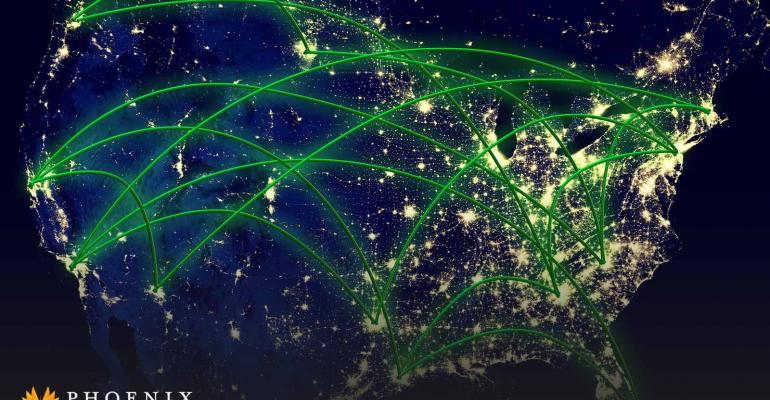Sponsored by Frank Crivello
While it has been popular for American companies to manufacture goods overseas for many years, COVID-19 laid bare the flaws in this supply chain model. The savings offered by outsourcing to China and other distant countries paled in comparison to the losses incurred when a global pandemic put thousands of miles and an ocean between many U.S. businesses and their primary suppliers. A report from McKinsey showed that 73 percent of supply chain leaders faced disruption in production and distribution due to coronavirus.
With this lesson front of mind, supply chain leaders have begun exploring new models that will improve resiliency and shorten lead times. Reshoring has become a popular trend, with 69 percent of U.S. companies reporting that they plan to reshore manufacturing to the United States. Rather than centralizing all capabilities, however, many businesses are attempting to diversify their assets to combat future disruption.
What is Regionalization?
American companies have begun exploring opportunities to distribute their manufacturing capabilities across multiple strategic regions within the United States in a practice now being commonly referred to as “regionalization.” Operating multiple manufacturing facilities in different geographical locations makes it much less likely that a company’s total production output will shut down in the event of a major catastrophe or disruption.
For example, if several employees at one plant in Wisconsin test positive for COVID-19, that plant can be shut down for cleaning and quarantining while production of goods ramps up at a second plant in Tennessee to meet demand. Regionalization serves the same purpose for fulfillment operations, though many larger organizations already do this with their distribution assets.
Another form of regionalization involves building redundancies to bolster the resiliency of existing operations by selecting regions in different countries. Instead of pulling all manufacturing assets out of an existing outsourced destination, a business will instead divide or duplicate their assets with additional facilities in the United States or another country. Similarly, a company that wants to leave China due to the events of the past few years may choose to split their manufacturing between the United States and a nearshore destination such as Mexico.
This practice isn’t limited only to reshoring companies. Entities with all of their assets in the United States will find value in distributing those assets across multiple states. For instance, many e-commerce and omnichannel retailers who struggled with shutdowns in centralized distribution centers are now exploring options to regionalize their capabilities and build more resilience into their supply chains.
Factors to Consider When Finding New Regions
For those wondering how to regionalize manufacturing or distribution assets, here are some factors to consider:
- Lead times. Consider your customers and their expectations. If you serve the aftermarket automotive sector in the U.S. and Mexico, for example, a Chinese manufacturing center will not be ideal in the event of a major disruption.
- If COVID-19 taught us anything, it’s that the right kind of emergency will close borders. Make sure you have manufacturing and distribution capabilities within the country that houses your largest customer base.
- Consumer expectations. If you primarily serve consumers that expect delivery within a day or two, that will impact your choice of location for distribution centers. Similarly, manufacturers should consider their largest customers and their locations when siting new production facilities.
- Make sure any region you’re considering has a ready labor pool to draw from. A new plant or fulfillment center does little good if you can’t find anyone to work there. Of note, regionalization doesn’t work if you share employees between nearby regions. For example, warehouses in Chicago and Milwaukee won’t prevent systemic disruption
- When establishing multiple facilities, try to select regions that are easily connected by interstates and highways. This will allow you to move inventory between them quickly and without hassle.
- As manufacturing and fulfillment trend toward automation and Internet of Things (IoT) capabilities, it’s important to select regions that have reliable network connectivity that can support these technologies. Good connectivity will also facilitate better inventory management and control across facilities.
About Phoenix Investors
Founded by Frank Crivello in 1994, Milwaukee-based Phoenix Investors and its affiliates (collectively “Phoenix”) are a leader in the acquisition, development, renovation, and repositioning of industrial facilities throughout the United States. Utilizing a disciplined investment approach and successful partnerships with institutional capital sources, corporations, and public stakeholders, Phoenix has developed a proven track record of generating superior risk adjusted returns, while providing cost-efficient lease rates for its growing portfolio of national tenants. Its efforts inspire and drive the transformation and reinvigoration of the economic engines in the communities it serves. Phoenix continues to be defined by thoughtful relationships, sophisticated investment tools, cost efficient solutions, and a reputation for success.




